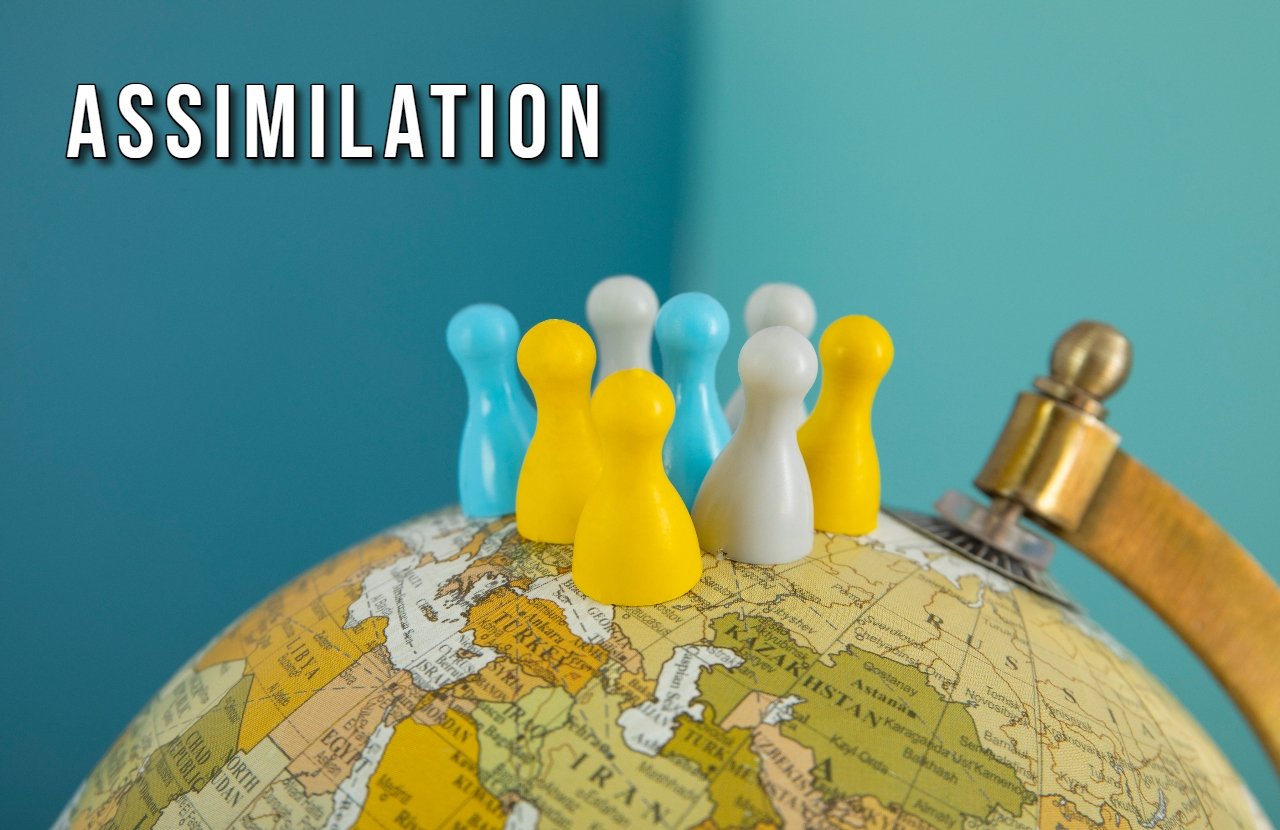Culture
Understanding Assimilation: The Journey of Cultures Merging

Assimilation is a powerful force that shapes our world, blending cultures and reshaping identities. From the bustling streets of multicultural cities to the subtle traditions passed down through generations, assimilation influences how we connect and interact with one another. It’s not just about adopting new customs; it’s a complex journey where experiences collide and evolve.
Imagine walking into a vibrant market filled with the scents of spices from different corners of the globe or hearing languages intertwine in everyday conversations. This rich tapestry showcases both the beauty and challenges of cultural merging. As societies continue to evolve, understanding assimilation becomes crucial for navigating these changes.
In this blog post, we will delve into what assimilation truly means, explore its history, provide real-life examples, and discuss its effects on individuals and communities alike. Join us as we embark on this fascinating exploration of cultures coming together in unexpected ways!
You Might Also Like: Sodziu
Assimilation is a dynamic process that occurs when individuals or groups adopt the customs and values of another culture. This journey often involves a blend of acceptance, adaptation, and sometimes resistance. As cultures merge, they create new identities while preserving elements from their origins.
The experience of assimilation can vary widely among individuals. Some may embrace the changes wholeheartedly, finding joy in discovering new traditions and practices. Others might struggle with feelings of loss as they navigate their changing sense of self within a diverse environment.
Throughout history, various societies have undergone significant transformations due to assimilation. From immigration waves to colonial encounters, these shifts have left lasting impacts on social structures and cultural landscapes worldwide. Understanding this complex journey sheds light on how we relate to one another amidst our differences.
Introduction to Assimilation
Assimilation is a complex process where individuals or groups adopt the cultural traits of another society. This often occurs when different cultures interact, leading to changes in language, customs, and social behaviors. Over time, these adaptations can create a blended identity that reflects elements from both cultures.
The journey of assimilation isn’t uniform; it varies widely based on personal experiences and societal contexts. Some may embrace their new environment eagerly, while others might struggle with loss or displacement. It’s this emotional landscape that makes assimilation an intricate experience for many.
Understanding how people navigate this journey is essential. It sheds light on the broader dynamics of cultural exchange and highlights the resilience found within diverse communities striving for cohesion amidst differences. Assimilation opens up conversations about identity and belonging in our increasingly interconnected world.
The Definition and History of Assimilation
Assimilation refers to the process through which individuals or groups adopt the cultural norms of another society, often losing aspects of their original culture. This phenomenon can occur at various levels—personal, social, and institutional. It’s an integral part of how communities evolve over time.
Historically, assimilation has played a crucial role in shaping societies worldwide. From ancient empires absorbing conquered peoples to modern immigration waves integrating into new nations, the dynamics are complex. The term gained prominence in sociological discussions during the 19th century.
Cultural assimilation is not uniform; it varies based on factors like ethnicity and socioeconomic status. While some may embrace change willingly, others face pressures that challenge their identity. Understanding this context helps illuminate the intricacies involved in cultural merging processes today.
Examples of Cultural Assimilation
Cultural assimilation can be seen in various contexts around the world. One notable example is the experience of immigrants who adopt the language and customs of their new country. For instance, when families move to a different nation, children often adapt more quickly than adults, learning local languages and traditions.
Another illustration lies within food culture. Dishes from diverse backgrounds blend into mainstream cuisine. Think about how tacos have become a staple in American fast-food menus or sushi bars popping up globally.
Music also showcases cultural assimilation through genres like reggae influencing pop music or hip-hop incorporating elements from different cultures. These examples highlight how distinct cultural identities can merge over time while still retaining unique characteristics that enrich society as a whole.
The Positive and Negative Effects of Assimilation
Assimilation can lead to greater social cohesion. When cultures merge, shared values and norms often develop, fostering unity among diverse groups. This blending can create a richer cultural tapestry, enhancing creativity and innovation across communities.
However, the process isn’t without its downsides. Individuals may feel pressure to abandon their original customs or languages in favor of dominant ones. This loss can lead to identity crises and feelings of alienation for those who struggle with the transition.
Furthermore, assimilation might perpetuate power imbalances. Minority groups may face discrimination as they try to integrate into mainstream society while maintaining aspects of their heritage. The challenge lies in balancing integration with respect for diverse identities that enrich our global community.
Challenges Faced by Those Going Through Assimilation
Assimilation can be a complex journey, filled with numerous challenges. For many individuals, the struggle to balance their cultural identity with new societal expectations often leads to feelings of displacement. This internal conflict may create stress and anxiety as they navigate unfamiliar customs.
Language barriers also pose significant obstacles during this process. Not being fluent in the dominant language can lead to misunderstandings and feelings of isolation. It hinders effective communication and makes it difficult for newcomers to connect with others meaningfully.
Additionally, there is the risk of losing one’s heritage amidst the push towards assimilation. Many feel pressured to abandon traditions that once defined them in favor of those more widely accepted by their new community. This loss can result in a sense of grief over what is left behind while trying to embrace something entirely different.
How to Navigate the Journey of Cultures Merging
Navigating the journey of cultures merging requires openness and curiosity. Embrace new experiences with a willingness to learn from those around you. Ask questions, engage in conversations, and immerse yourself in different traditions. This creates a bridge between your culture and others.
Building relationships is key during this process. Connect with individuals who share their cultural stories, as these personal narratives can deepen your understanding. Participate in community events or workshops to foster connections and expand your perspective.
Don’t shy away from challenges that arise along the way. Misunderstandings may happen; it’s important to approach them with patience and empathy. Reflect on your experiences regularly, allowing for growth while maintaining respect for both your heritage and the cultures you encounter.
Conclusion
Assimilation is a complex and nuanced process that shapes the fabric of societies. As cultures merge, they create rich tapestries woven from diverse threads of tradition, language, and belief. While some may find comfort in blending into a new culture, others may struggle with loss or identity challenges.
Navigating this journey requires understanding and patience. Embracing both old and new aspects can foster unity while respecting individual histories. The road to assimilation is not just about adopting another’s way of life; it’s also about celebrating what makes each culture unique.
Recognizing the duality in this experience helps individuals thrive within their communities. By fostering dialogue and connection among different cultural backgrounds, we can enhance mutual respect and coexistence. Assimilation doesn’t erase differences—it enriches our shared human experience.

-

 News10 months ago
News10 months agoShannon Reardon Swanick: Her Inspiring Journey
-

 Food10 months ago
Food10 months agoRed Lobster TGI Fridays Closing: Industry Shifts
-

 News10 months ago
News10 months agoHcooch ch2 h2o: Understanding Its Role in Chemistry
-

 Food7 months ago
Food7 months agoCranberry Field Spiders: Nature’s Unsung Heroes in Our Bogs
-

 News10 months ago
News10 months agoMyGreenBucks Kenneth Jones: Financial Tips and Success Stories
-

 Technology10 months ago
Technology10 months agoAdsy.pw/hb3 Explained: Supercharge Your Online Growth
-

 News10 months ago
News10 months agoPrincess Kazer: The Untold Story of Her Legacy
-

 Technology8 months ago
Technology8 months agoKingxomiz: The Rise, Influence & Empire of a Digital Visionary